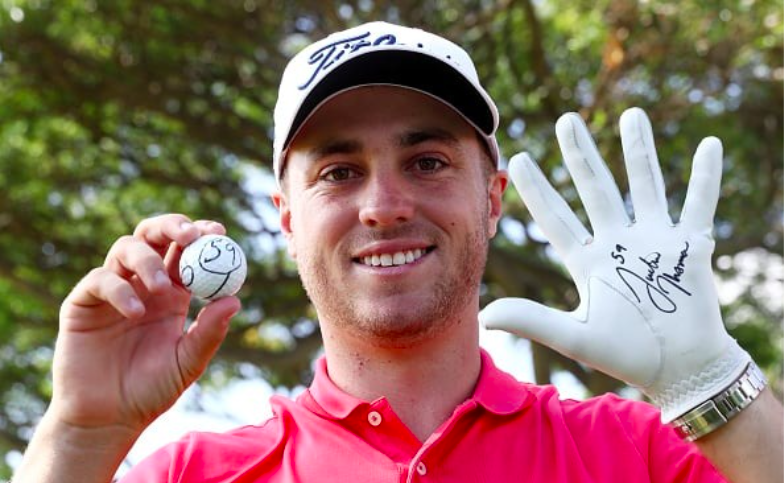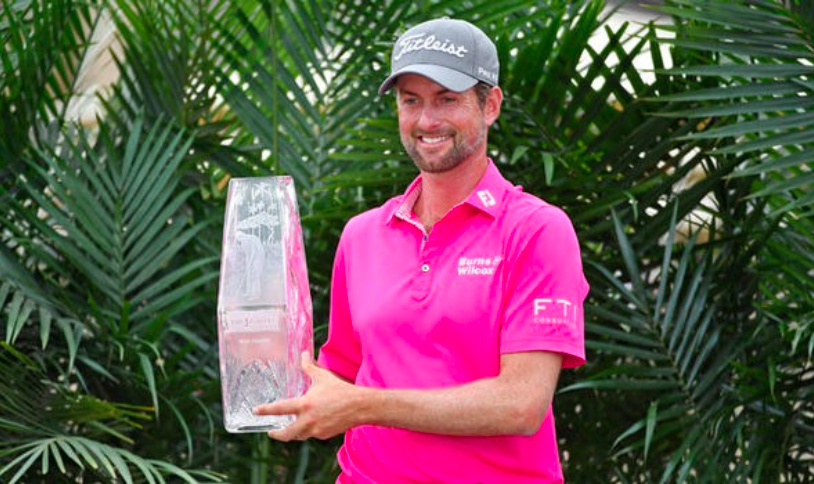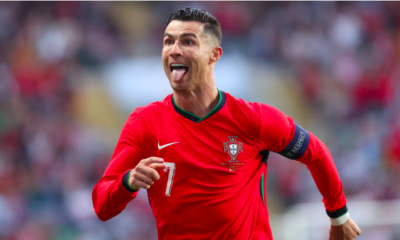Golf
Exploring the Rich Landscape of Golf in North America

Exploring the Rich Landscape of Golf in North America
Golf in North America boasts a storied history, world-renowned courses, and a vibrant professional scene. From the early days of the sport to the present, North America has played a crucial role in shaping modern golf. This comprehensive article delves into the evolution of golf on the continent, key figures, iconic tournaments, technological advancements, and future prospects.
The Historical Evolution of Golf in North America
Early Beginnings and Growth
Golf’s roots in North America can be traced back to the late 19th century, with the establishment of some of the earliest golf courses and clubs:
- St. Andrews Golf Club (New York) – Founded in 1888, it is one of the oldest golf clubs in the United States.
- Royal Montreal Golf Club (Canada) – Established in 1873, it is the oldest golf club in North America.
Expansion Across the Continent
As the popularity of golf grew, more courses were built across the United States and Canada, leading to a boom in the early 20th century. By the mid-1900s, golf had become a mainstream sport, with legendary players emerging and major tournaments being established.
Key Figures in North American Golf
Arnold Palmer
Arnold Palmer, known as “The King,” is one of golf’s most charismatic and influential figures. His approachable personality and exceptional skill helped popularize golf in the United States during the 1960s and beyond.
Jack Nicklaus
Jack Nicklaus, often referred to as “The Golden Bear,” holds the record for the most major championships with 18 titles. His strategic approach and competitive spirit have left an indelible mark on the sport.
Annika Sörenstam
Although originally from Sweden, Annika Sörenstam’s success on the LPGA Tour has had a significant impact on women’s golf in North America. With 10 major championships, she is one of the greatest female golfers in history.
Prominent Golf Tournaments in North America
The Masters Tournament
Held annually at Augusta National Golf Club in Georgia, The Masters is one of golf’s most prestigious events. Known for its iconic green jacket, this tournament attracts the best golfers from around the world.
U.S. Open
The U.S. Open, organized by the United States Golf Association (USGA), is renowned for its challenging courses and competitive field. It is one of the four major championships in professional golf.
PGA Championship
The PGA Championship, conducted by the Professional Golfers’ Association of America, is another major tournament that showcases top talent. It is known for its strong field and competitive play.
RBC Canadian Open
The RBC Canadian Open is Canada’s premier golf tournament. It has a rich history dating back to 1904 and continues to attract top players from around the globe.
Iconic Golf Courses in North America

Pebble Beach Golf Links
Located on the scenic Monterey Peninsula in California, Pebble Beach is one of the most beautiful and challenging courses in the world. It has hosted numerous U.S. Opens and is a favorite among both professionals and amateurs.
Augusta National Golf Club
Home to The Masters, Augusta National is revered for its pristine condition, stunning azaleas, and iconic holes like Amen Corner. It is a symbol of tradition and excellence in golf.
Pinehurst No. 2
Pinehurst No. 2, located in North Carolina, is famous for its unique design by Donald Ross and its challenging greens. It has hosted multiple U.S. Opens and is a beloved course among golfers.
Banff Springs Golf Club
Nestled in the Canadian Rockies, Banff Springs Golf Club offers breathtaking views and a challenging layout. Designed by Stanley Thompson, it is one of Canada’s most picturesque courses.
Technological Advancements in North American Golf
Advanced Training Facilities
North America boasts some of the best golf training facilities in the world. These facilities utilize cutting-edge technology such as TrackMan, simulators, and biomechanical analysis to help golfers improve their skills.
Equipment Innovation
Golf equipment manufacturers in North America continuously innovate to produce clubs, balls, and accessories that enhance performance. Advances in materials, design, and aerodynamics contribute to better play and enjoyment of the game.
Golf Course Management
Technological advancements in course management, such as GPS systems and automated irrigation, help maintain the quality of North American golf courses. These innovations ensure optimal playing conditions and sustainability.
Women’s Golf in North America
Pioneering Figures
Women’s golf in North America has been shaped by pioneers like Babe Zaharias and Mickey Wright, who broke barriers and set records. Their contributions laid the foundation for future generations.
Key Women’s Tournaments
Significant women’s golf tournaments in North America include:
- U.S. Women’s Open – One of the most prestigious events in women’s golf, showcasing top talent and competitive play.
- KPMG Women’s PGA Championship – Known for its strong field and challenging courses.
- CP Women’s Open – Canada’s national championship, attracting top female golfers from around the world.
Development Programs and Initiatives
Various programs and initiatives support the growth of women’s golf in North America. Organizations like the LPGA and Golf Canada offer development programs, scholarships, and mentorship opportunities for young female golfers.
Junior Golf Development in North America
Youth Programs
Youth programs like The First Tee and Drive, Chip & Putt aim to introduce children to golf and foster a love for the game. These programs provide coaching, resources, and competitive opportunities.
College Golf
College golf in North America is a vital stepping stone for aspiring professional golfers. Many top golfers honed their skills and gained valuable experience competing at the collegiate level.
Scholarships and Support
Numerous scholarships and support programs are available for young golfers in North America. These opportunities help talented individuals pursue their education and golfing ambitions simultaneously.
Golf Tourism in North America
Popular Golf Destinations
North America offers a plethora of golf destinations, each with its unique charm:
- Florida – Known for its year-round golfing weather and world-class courses.
- California – Home to iconic courses like Pebble Beach and Torrey Pines.
- Arizona – Offers desert-style courses with stunning landscapes.
- British Columbia – Features scenic courses with mountain and ocean views.
Golf Resorts and Packages
Golf resorts in North America provide luxurious accommodations, fine dining, and access to premier courses. Packages often include rounds of golf, spa treatments, and other amenities, making for a memorable golfing vacation.
International Tournaments and Events
Hosting international tournaments and events, such as the Presidents Cup and the Ryder Cup, enhances North America’s appeal as a premier golf destination. These events draw spectators and participants from around the globe.
Challenges Facing Golf in North America
Economic Factors
The cost of playing and maintaining golf courses can be a barrier to the sport’s growth. Efforts to make golf more affordable and accessible are essential for its continued development.
Diversity and Inclusion
Promoting diversity and inclusion remains a challenge for golf in North America. Initiatives aimed at increasing participation among underrepresented groups are vital for the sport’s future.
Environmental Concerns
Balancing the need for beautiful, well-maintained courses with environmental concerns requires innovative solutions. Sustainable practices in water conservation, habitat protection, and the use of eco-friendly materials are crucial.
Future Prospects for Golf in North America
Technological Integration
The continued integration of technology in golf will play a significant role in its future. Innovations in equipment, training methods, and course management will enhance the overall golfing experience and attract new players.
Sustainability Initiatives
Adopting sustainable practices in golf course design and maintenance will ensure the sport’s long-term viability. Emphasizing environmental responsibility will help golf courses thrive while minimizing their impact on the planet.
Youth and Amateur Golf
Investing in youth and amateur golf is vital for the future of the sport in North America. Programs that provide training, resources, and competitive opportunities for young golfers will help nurture the next generation of champions.
Professional Golf Expansion
Expanding professional golf tours and tournaments will provide more opportunities for players and enhance the sport’s visibility. North America’s diverse landscape offers ample venues for hosting major events and growing the game.
Conclusion
Golf in North America is a dynamic and evolving landscape, steeped in history and brimming with potential. From legendary courses to emerging talents, the continent continues to shape the future of the sport. By embracing technological advancements, promoting diversity and inclusion, and investing in youth development, golf in North America is poised for continued growth and success.
Frequently Asked Questions (FAQs)
What are some of the most famous golf courses in North America?
Some of the most famous golf courses in North America include Pebble Beach Golf Links, Augusta National Golf Club, Pinehurst No. 2, and Banff Springs Golf Club. These courses are renowned for their beauty, history, and challenging layouts.
Who are some of the most influential golfers from North America?
Influential golfers from North America include Arnold Palmer, Jack Nicklaus, and Annika Sörenstam. These players have achieved significant success and have inspired many others in the sport.
What are the major golf tournaments held in North America?
Major golf tournaments held in North America include The Masters, the U.S. Open, the PGA Championship, and the RBC Canadian Open. These prestigious events attract top golfers from around the world and showcase North America’s golfing excellence.
How is technology impacting golf in North America?
Technology is impacting golf in North America through advanced training facilities, equipment innovation, and golf course management. These advancements help players improve their skills, enhance the performance of golf equipment, and maintain courses in optimal condition.
What efforts are being made to promote diversity and inclusion in golf?
Efforts to promote diversity and inclusion in golf include initiatives by organizations like the PGA and LPGA to increase participation among underrepresented groups. Programs such as The First Tee aim to introduce golf to children from diverse backgrounds, providing access to training and competitive opportunities.
What are some popular golf destinations in North America for tourists?
Popular golf destinations in North America include Florida, California, Arizona, and British Columbia. These regions offer a variety of top-notch golf courses, luxurious resorts, and scenic landscapes, making them ideal for golf vacations.
Golf
Justin Thomas Net Worth: Unveiling the Wealth of a Golfing Prodigy

Justin Thomas Net Worth: Unveiling the Wealth of a Golfing Prodigy
Justin Thomas, an elite professional golfer, has made a significant mark in the world of golf with his impressive achievements and growing financial success. This article provides an in-depth analysis of Justin Thomas’s net worth, exploring his career milestones, endorsement deals, and personal investments. We aim to offer a comprehensive view of how Thomas has accumulated his wealth and what factors contribute to his financial standing.
Early Life and Career Beginnings
The Early Years
Justin Thomas was born on April 29, 1993, in Louisville, Kentucky. Growing up in a family with a strong golfing background, Thomas was introduced to the sport at a young age. His father, Mike Thomas, a PGA professional, played a crucial role in shaping his early interest in golf.
Thomas attended St. Xavier High School, where he showcased his golfing talent by winning several junior tournaments. His success in high school golf laid the foundation for his future career as a professional golfer.
Collegiate Achievements
After high school, Justin Thomas enrolled at the University of Alabama, where he played college golf under the guidance of Coach Jay Seawell. During his time at Alabama, Thomas achieved notable success, including winning the 2012 Haskins Award, given to the best college golfer in the country.
His collegiate career was marked by several victories and a national championship, which set the stage for his transition to professional golf.
Turning Professional
Professional Debut
In 2013, Justin Thomas turned professional, joining the PGA Tour after a successful stint on the Web.com Tour. His debut season was promising, with several top-10 finishes that indicated his potential to excel at the highest level of the sport.
Breakthrough Victories
Thomas’s breakthrough came in 2015 when he won his first PGA Tour event at the CIMB Classic. This victory was a significant milestone in his career, demonstrating his ability to compete and succeed on the global stage.
Since then, Thomas has accumulated multiple victories on the PGA Tour, including major championships and prestigious tournaments. His consistent performance and impressive skills have cemented his status as one of the top golfers in the world.
Career Achievements
Major Championships
Justin Thomas’s career has been highlighted by several major victories. One of his most significant achievements was winning the PGA Championship in 2017. This victory not only earned him a substantial prize but also solidified his reputation as a top golfer.
Thomas’s victory at the PGA Championship was a testament to his skill and determination. It marked a turning point in his career, elevating him to the upper echelons of professional golf.
Other Notable Wins
In addition to his major championship victory, Thomas has accumulated several other notable wins on the PGA Tour. Some of his key victories include:
- 2016 SBS Tournament of Champions
- 2019 The Players Championship
- 2020 WGC-FedEx St. Jude Invitational
Each of these victories has contributed to Thomas’s growing net worth and established him as a prominent figure in the world of golf.
Endorsements and Sponsorships
Lucrative Endorsement Deals
Justin Thomas’s success on the golf course has attracted several high-profile endorsements and sponsorships. Companies such as Titleist, Rolex, and Citi have partnered with Thomas, providing him with lucrative endorsement deals.
Titleist has been a significant sponsor, providing Thomas with equipment and apparel that enhance his performance on the course. Rolex and Citi have also contributed to his financial success through endorsement deals that highlight his status as a top golfer.
Impact on Net Worth
Endorsements and sponsorships play a crucial role in augmenting Justin Thomas’s net worth. The financial backing from these companies allows Thomas to focus on his game while benefiting from substantial financial rewards.
Personal Life and Investments
Family and Relationships
Justin Thomas is known for his close-knit family and strong relationships. He is engaged to his longtime girlfriend, Jillian, and the couple’s relationship is a significant aspect of Thomas’s personal life.
Real Estate and Investments
In addition to his earnings from golf and endorsements, Justin Thomas has made several strategic investments in real estate. Owning properties in prime locations contributes significantly to his overall net worth. His investments reflect a well-thought-out approach to securing his financial future beyond his golfing career.
Philanthropy and Community Involvement
Charitable Contributions
Justin Thomas is actively involved in various charitable endeavors. He supports organizations such as The Justin Thomas Foundation, which focuses on providing educational opportunities and supporting youth development programs.
Thomas’s commitment to philanthropy not only enhances his public image but also underscores his dedication to giving back to the community.
Net Worth Estimation
Financial Overview
As of 2024, Justin Thomas’s estimated net worth is approximately $50 million. This figure includes earnings from his PGA Tour victories, endorsement deals, and investments. Thomas’s financial success is a result of his exceptional skills, strategic financial management, and savvy investments.
Comparison with Peers
When compared to other professional golfers, Thomas’s net worth places him among the top earners in the sport. His achievements on the course, combined with lucrative endorsements and smart investments, contribute to his impressive financial standing.
Conclusion
Justin Thomas’s rise from a promising amateur to a top professional golfer is a testament to his talent, hard work, and strategic financial planning. His significant victories, high-profile endorsements, and strategic investments have contributed to his impressive net worth. As Thomas continues to excel on the PGA Tour and engage in philanthropic efforts, his legacy in the world of golf remains firmly established.
Frequently Asked Questions (FAQs)
How did Justin Thomas become a successful professional golfer?
Justin Thomas achieved success through his outstanding performances on the PGA Tour, including major victories and consistent play. His career was marked by several key wins, such as the 2017 PGA Championship.
What are some of Justin Thomas’s major golf achievements?
Major achievements include winning the PGA Championship in 2017, the SBS Tournament of Champions in 2016, and The Players Championship in 2019.
Which companies endorse Justin Thomas?
Justin Thomas has endorsement deals with companies such as Titleist, Rolex, and Citi, which provide him with financial backing and support.
How does Justin Thomas manage his personal life?
Justin Thomas maintains a close relationship with his family and is engaged to his longtime girlfriend. Balancing his personal life with his professional career is an important aspect of his life.
What philanthropic efforts is Justin Thomas involved in?
Justin Thomas supports various charitable organizations through The Justin Thomas Foundation, focusing on educational opportunities and youth development programs.
Golf
Webb Simpson Net Worth: The Rise of a Golfing Legend

Webb Simpson Net Worth: The Rise of a Golfing Legend
Webb Simpson, an American professional golfer, has captivated fans with his impressive skills and dedication to the sport. Known for his remarkable achievements on the PGA Tour, Simpson’s journey from a promising amateur to a celebrated professional is a testament to his hard work and talent. This comprehensive article explores Webb Simpson’s net worth, career milestones, and personal life, providing a detailed look at the factors that contribute to his financial success.
Early Life and Career Beginnings
A Promising Start
Webb Simpson was born on August 8, 1985, in Raleigh, North Carolina. Growing up in a sports-oriented family, Simpson was introduced to golf at a young age. His father, a passionate golfer himself, played a significant role in nurturing Simpson’s early interest in the sport.
Simpson attended Broughton High School, where he quickly gained recognition for his golfing prowess. His high school career was marked by several notable achievements, including winning the North Carolina High School Athletic Association 4A State Championship.
Collegiate Success
After high school, Simpson continued to hone his skills at the University of Georgia. During his time at college, he became a standout player on the college golf circuit. His success at Georgia, where he was a member of the All-American team, set the stage for his transition to professional golf.
Turning Professional
Early Professional Years
In 2008, Webb Simpson turned professional and joined the Nationwide Tour (now the Korn Ferry Tour). His performance on the tour was impressive, and he quickly gained attention for his potential. Simpson’s breakthrough came in 2011 when he secured his first PGA Tour victory at the Wyndham Championship.
Rising Through the Ranks
Simpson’s victory at the Wyndham Championship marked the beginning of a successful career. Over the years, he continued to build on this success with multiple wins and high finishes in major tournaments. His consistency and skill on the course earned him a spot among the top golfers in the world.
Career Achievements
Major Victories
Webb Simpson’s career has been highlighted by several major victories. One of his most significant achievements came in 2012 when he won the U.S. Open. This victory solidified his reputation as one of the top golfers of his generation.
Simpson’s U.S. Open win was a testament to his ability to perform under pressure. The win not only earned him substantial prize money but also elevated his status in the golfing world.
Other Notable Wins
In addition to his major victory, Simpson has accumulated several other wins on the PGA Tour. Some of his notable wins include:
- 2011 Wyndham Championship
- 2018 The Players Championship
- 2019 RSM Classic
Each of these victories has contributed to Simpson’s growing net worth and established him as a prominent figure in professional golf.
Endorsements and Sponsorships
High-Profile Endorsements
Webb Simpson’s success on the golf course has attracted several high-profile endorsements and sponsorships. Companies such as Titleist, FootJoy, and Ping have partnered with Simpson, providing him with lucrative endorsement deals.
Titleist and FootJoy have been particularly significant in Simpson’s career, offering him equipment and apparel that enhance his performance on the course. These endorsements not only contribute to Simpson’s income but also bolster his public image.
Impact on Net Worth
Endorsements and sponsorships play a crucial role in augmenting Webb Simpson’s net worth. The financial backing from these companies allows Simpson to focus on his game while benefiting from substantial financial rewards.
Personal Life and Investments
Family Life
Webb Simpson is married to his college sweetheart, Dowdie. The couple has four children together, and Simpson is known for his strong family values. Balancing his professional career with family life has been an important aspect of Simpson’s personal life.
Real Estate Investments
In addition to his earnings from golf and endorsements, Simpson has made several smart investments in real estate. Owning properties in prime locations contributes significantly to his overall net worth. His investments reflect a strategic approach to securing his financial future beyond his golfing career.
Philanthropy and Community Involvement
Charitable Contributions
Webb Simpson is actively involved in various charitable endeavors. He supports organizations such as The First Tee, which promotes golf among young people, and Operation Smile, which provides medical treatment to children in need.
Simpson’s commitment to philanthropy not only enhances his public image but also underscores his dedication to giving back to the community.
Net Worth Estimation
Financial Overview
As of 2024, Webb Simpson’s estimated net worth is approximately $25 million. This figure includes earnings from his PGA Tour victories, endorsement deals, and investments. Simpson’s financial success is a result of his hard work, skill, and strategic financial management.
Comparison with Peers
When compared to other professional golfers, Simpson’s net worth places him among the top earners in the sport. His achievements on the course, combined with lucrative endorsements and smart investments, contribute to his impressive financial standing.
Conclusion
Webb Simpson’s journey from a promising amateur to a successful professional golfer is a testament to his dedication and skill. His significant victories, high-profile endorsements, and strategic investments have contributed to his impressive net worth. As Simpson continues to excel on the PGA Tour and engage in philanthropic efforts, his legacy in the world of golf remains firmly established.
Frequently Asked Questions (FAQs)
How did Webb Simpson rise to prominence in professional golf?
Webb Simpson gained prominence through his impressive performances on the PGA Tour, including his major victory at the 2012 U.S. Open. His consistent play and multiple wins have solidified his reputation as a top golfer.
What are some of Webb Simpson’s most notable golf achievements?
Notable achievements include his victory at the 2012 U.S. Open, the 2011 Wyndham Championship, the 2018 Players Championship, and the 2019 RSM Classic.
What companies have endorsed Webb Simpson?
Webb Simpson has endorsement deals with companies such as Titleist, FootJoy, and Ping, which provide him with equipment and apparel.
How does Webb Simpson balance his professional and personal life?
Simpson balances his career with family life by maintaining strong family values and making time for his wife and four children. His personal life is important to him, and he ensures it complements his professional commitments.
What philanthropic efforts is Webb Simpson involved in?
Webb Simpson supports organizations like The First Tee and Operation Smile, contributing to causes that promote youth golf and provide medical care to children in need.
Golf
Louis Oosthuizen’s Net Worth: A Detailed Look at His Wealth

Louis Oosthuizen’s Net Worth: A Detailed Look at His Wealth
Louis Oosthuizen, a name synonymous with golfing excellence, has left an indelible mark on the sport. With a career filled with remarkable achievements, including a major championship win at the 2010 Open Championship, Oosthuizen has become one of the most respected golfers in the world. But beyond his success on the greens, many fans and followers are curious about his financial standing. In this article, we delve deep into Louis Oosthuizen’s net worth, exploring the various sources of his income, his lifestyle, and how his wealth has evolved over the years.
Early Life and Career Beginnings
Humble Beginnings in South Africa
Louis Oosthuizen was born on October 19, 1982, in Mossel Bay, South Africa. Growing up in a modest family, Oosthuizen’s journey to becoming a world-class golfer was anything but easy. His love for the game was evident from a young age, and despite financial constraints, he pursued his passion with unwavering determination.
Breaking into the Professional Golf Scene
Oosthuizen’s professional career began in 2002 when he joined the Sunshine Tour, the main professional golf tour in Southern Africa. His early years were marked by consistent performances, and by 2004, he had secured his first victory. This win was a significant milestone, as it not only boosted his confidence but also laid the foundation for his future success on the international stage.
Major Career Milestones
The 2010 Open Championship
The pinnacle of Louis Oosthuizen’s career came in 2010 when he won The Open Championship at St Andrews. This victory catapulted him to global fame and significantly impacted his net worth. Oosthuizen’s performance was nothing short of spectacular, as he led the tournament from start to finish, eventually winning by a comfortable margin of seven strokes.
Consistent Performances in Major Championships
Since his triumph at The Open, Oosthuizen has continued to perform well in major championships. He has finished as a runner-up in all four majors, including the Masters, U.S. Open, and PGA Championship. These consistent top-tier finishes have not only solidified his reputation as a world-class golfer but have also contributed significantly to his earnings.
Louis Oosthuizen’s Earnings and Endorsements
Prize Money from Tournaments
One of the primary sources of Louis Oosthuizen’s net worth is the prize money he has earned from various tournaments. Over the years, his consistent performances have ensured a steady flow of income. As of 2024, his career earnings from professional golf tournaments alone are estimated to be in the millions.
Lucrative Endorsement Deals
Apart from his earnings on the golf course, Oosthuizen has also secured several lucrative endorsement deals. Companies such as Ping, Titleist, and FootJoy have partnered with him, recognizing his value as a brand ambassador. These endorsements have not only increased his income but have also played a crucial role in enhancing his global brand image.
Investments and Business Ventures
Louis57 Wines
Louis Oosthuizen is not just a golfer; he is also an astute businessman. One of his most notable ventures is Louis57 Wines, a brand that reflects his passion for winemaking. Based in South Africa, Louis57 Wines has grown significantly since its inception, contributing to Oosthuizen’s overall net worth.
Real Estate Investments
In addition to his business ventures, Oosthuizen has made several smart real estate investments. He owns properties in South Africa and the United States, including a stunning estate in Florida. These properties not only serve as luxurious residences but also add to his financial portfolio.
Louis Oosthuizen’s Lifestyle and Philanthropy
A Simple Yet Luxurious Lifestyle
Despite his wealth, Louis Oosthuizen is known for leading a relatively simple life. He enjoys spending time with his family on his farm in South Africa, where he indulges in his love for agriculture. However, this simplicity does not mean he doesn’t enjoy the finer things in life. Oosthuizen’s homes, cars, and lifestyle choices reflect a man who appreciates luxury, albeit in a modest way.
Philanthropic Efforts
Oosthuizen is also deeply committed to giving back to the community. Through his Louis Oosthuizen Junior Golf Academy, he supports young and aspiring golfers in South Africa. His philanthropic efforts extend beyond golf, as he is involved in various charitable initiatives aimed at improving the lives of underprivileged communities.
Comparing Louis Oosthuizen’s Net Worth with Other Golfers
Oosthuizen vs. Ernie Els
When comparing Louis Oosthuizen’s net worth to other South African golfing legends like Ernie Els, it’s clear that both have made significant contributions to the sport. While Els’ net worth is higher, Oosthuizen’s steady growth in earnings and investments indicates that he is on a similar trajectory.
HGlobal Comparisons
On a global scale, Oosthuizen’s net worth may not rival the likes of Tiger Woods or Phil Mickelson, but it is still substantial. His prudent financial decisions, coupled with his success on the course, have ensured that he remains one of the wealthiest golfers in the world.
The Future of Louis Oosthuizen’s Net Worth
Upcoming Tournaments and Potential Earnings
As Oosthuizen continues to compete at the highest level, there is no doubt that his net worth will keep growing. His participation in upcoming tournaments presents opportunities for further earnings, both in terms of prize money and endorsement deals.
Expanding Business Ventures
In addition to his golfing career, Oosthuizen’s business ventures are likely to expand. With the success of Louis57 Wines and his real estate investments, it’s expected that he will continue to diversify his income streams, further increasing his net worth.
Conclusion
Louis Oosthuizen’s journey from a small town in South Africa to becoming one of the wealthiest golfers in the world is nothing short of inspirational. His net worth is a testament to his hard work, dedication, and smart financial decisions. As he continues to compete and grow his business ventures, there’s no doubt that Oosthuizen’s financial future looks incredibly bright.
Frequently Asked Questions (FAQs)
What is Louis Oosthuizen’s current net worth?
As of 2024, Louis Oosthuizen’s net worth is estimated to be around $40 million. This figure includes his earnings from golf tournaments, endorsements, business ventures, and real estate investments.
How did Louis Oosthuizen make his fortune?
Louis Oosthuizen made his fortune through a combination of prize money from professional golf tournaments, lucrative endorsement deals, and smart investments in businesses like Louis57 Wines and real estate.
Does Louis Oosthuizen have any other business ventures?
Yes, in addition to his golf career, Louis Oosthuizen owns Louis57 Wines and has made several real estate investments. These ventures have contributed significantly to his net worth.
How does Louis Oosthuizen spend his money?
Louis Oosthuizen leads a relatively simple life, with a focus on family and agriculture. However, he also enjoys the luxuries of life, owning properties in South Africa and the United States. He is also actively involved in philanthropy, particularly in supporting young golfers.
What are Louis Oosthuizen’s plans for the future?
Louis Oosthuizen plans to continue competing in professional golf tournaments while expanding his business ventures. His focus remains on growing his brand, increasing his net worth, and giving back to the community through his philanthropic efforts.
-

 NBA4 months ago
NBA4 months agoLaMelo Ball Net Worth: A Comprehensive Look at the NBA Star’s Financial Empire
-

 Football6 months ago
Football6 months agoMeet the World Football Celebrities and Their Stories
-

 Football5 months ago
Football5 months agoEuro 2024: Alvaro Morata Speaks Out About ‘No Respect’ in Spain
-

 Game5 months ago
Game5 months agoThe Ultimate Guide to General Multi-Sport Events
-

 Football5 months ago
Football5 months agoRonaldo’s Business Ventures and Investments (CR7 Brand)
-

 Football5 months ago
Football5 months agoEuro 2024 Power Rankings: Spain Remains Dominant Ahead of Semifinals
-

 Wrestling2 months ago
Wrestling2 months agoJey Uso Biography and Net Worth: The Rise of a WWE Superstar
-

 Sports6 months ago
Sports6 months agoPele: The Legendary Journey of Football’s Greatest Icon | The Immortal King of Football




